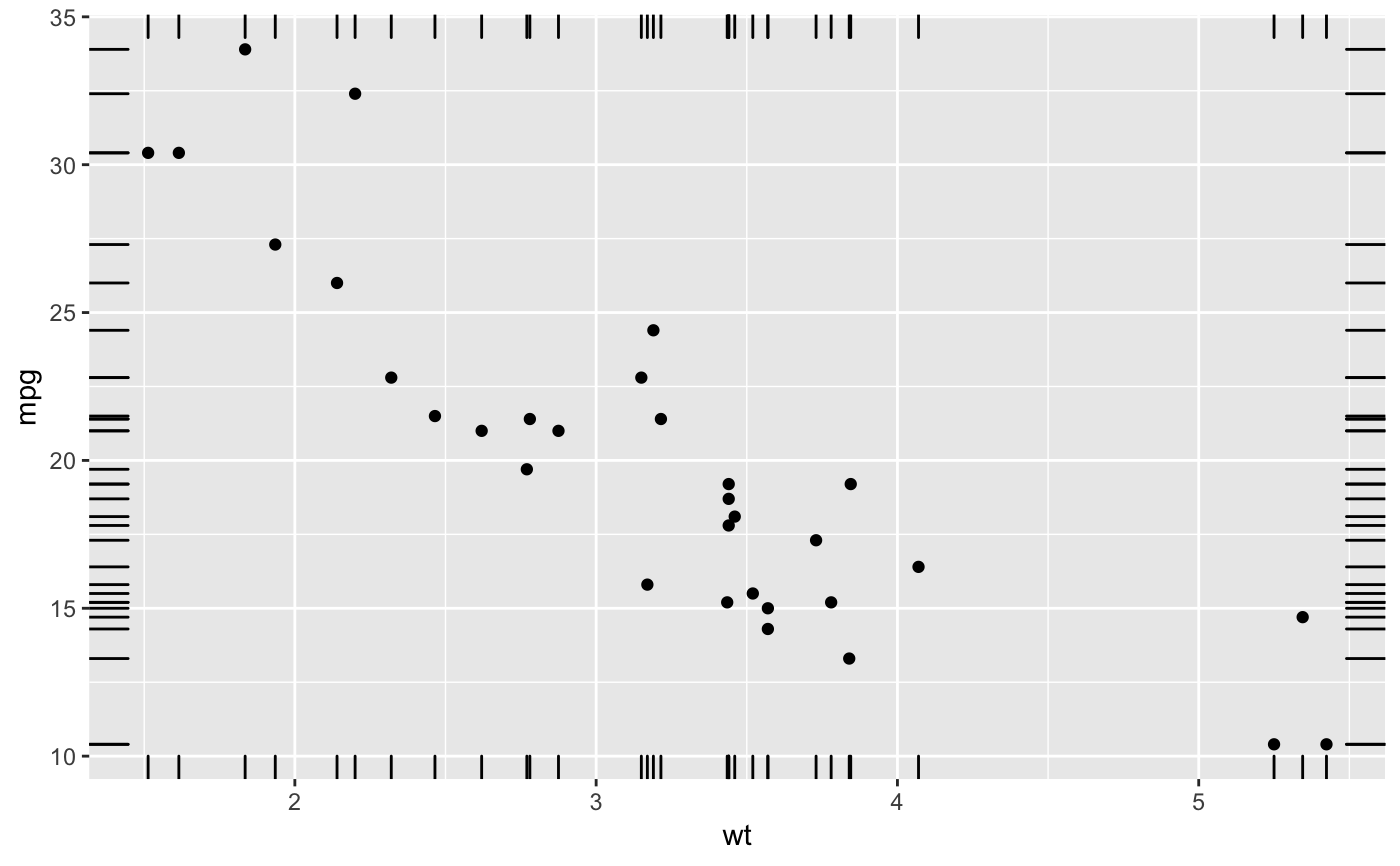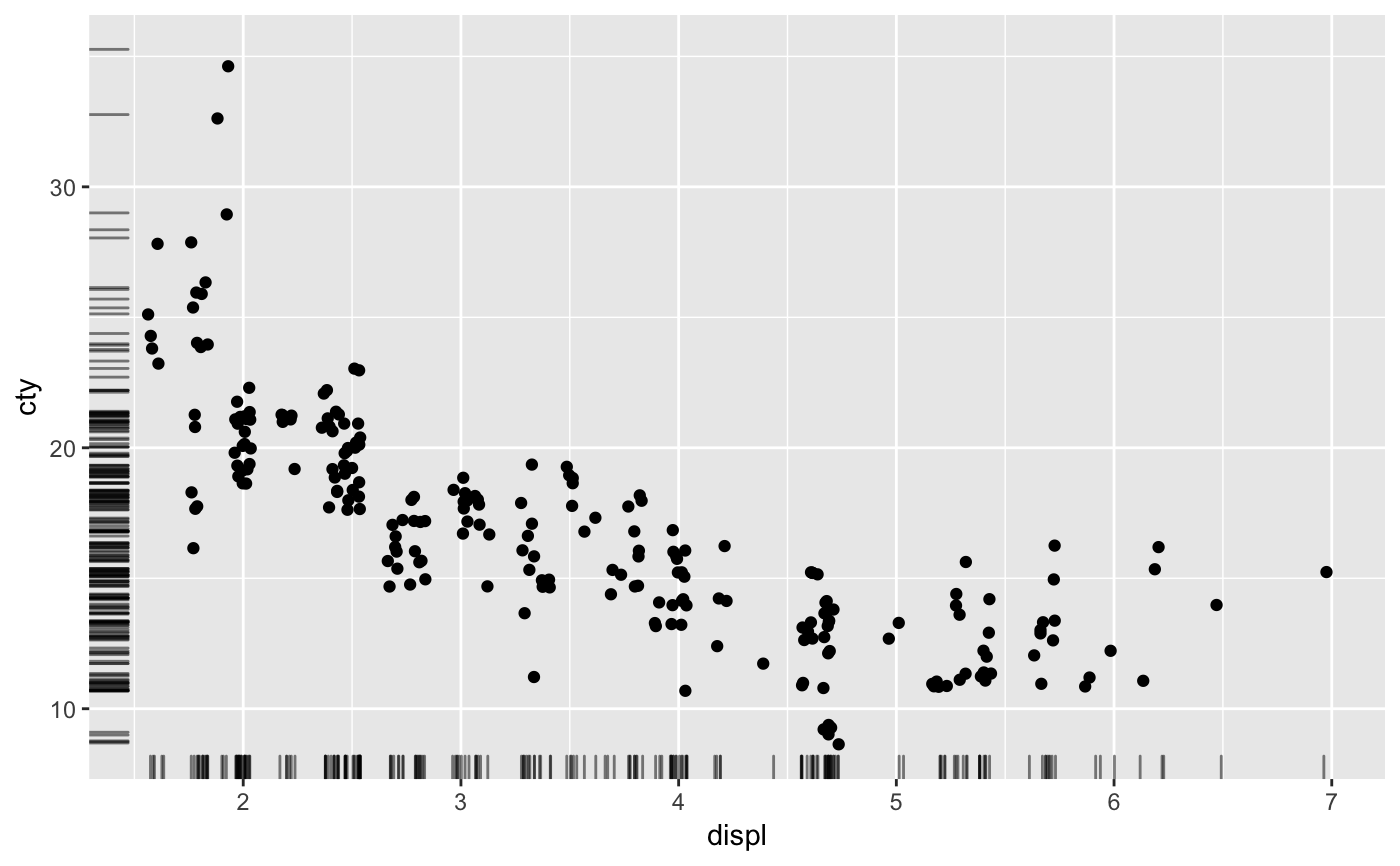A rug plot is a compact visualisation designed to supplement a 2d display with the two 1d marginal distributions. Rug plots display individual cases so are best used with smaller datasets.
geom_rug(mapping = NULL, data = NULL, stat = "identity", position = "identity", ..., sides = "bl", na.rm = FALSE, show.legend = NA, inherit.aes = TRUE)
Arguments
| mapping | Set of aesthetic mappings created by |
|---|---|
| data | The data to be displayed in this layer. There are three options: If A A |
| stat | The statistical transformation to use on the data for this layer, as a string. |
| position | Position adjustment, either as a string, or the result of a call to a position adjustment function. |
| ... | Other arguments passed on to |
| sides | A string that controls which sides of the plot the rugs appear on.
It can be set to a string containing any of |
| na.rm | If |
| show.legend | logical. Should this layer be included in the legends?
|
| inherit.aes | If |
Details
The rug lines are drawn with a fixed size (3 are dependent on the overall scale expansion in order not to overplot existing data.
Aesthetics
geom_rug understands the following aesthetics (required aesthetics are in bold):
alphacolourgrouplinetypesizexy
Learn more about setting these aesthetics in vignette("ggplot2-specs")
Examples
p + geom_rug()p + geom_rug(sides="b") # Rug on bottom onlyp + geom_rug(sides="trbl") # All four sides# Use jittering to avoid overplotting for smaller datasets ggplot(mpg, aes(displ, cty)) + geom_point() + geom_rug()





